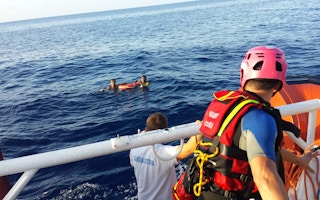Last week, Western publics and governments finally awoke from their collective slumber on the Syrian refugee crisis. Meanwhile, in Germany, international delegations refined a draft agreement on climate change ahead of the crucial summit in Paris in October.
While the two are seemingly worlds apart, I am reminded that the Syrian crisis and the growing climate crisis are linked in more ways than one.
Many have noted that in 2011, following a five year drought (the worst on record, in which 85 percent of livestock perished and 1.5 million people lost their livelihoods), Syria was “a tinderbox waiting to explode”. As my colleagues have noted, it is too reductive to say that climate change cause the Syrian civil war, but no-one doubts that it was a significant factor.
But there is also another connection: both crises are fuelled by the empathy gap in popular society.
For the Western public Syria is a far-away, hostile, unfamiliar place. We know little more than that it is “somewhere in the Middle East” (which may as well be the Andromeda galaxy for all its felt proximity), and, until last week, for most of us it existed only in the realm of news bulletins.
We knew millions had been displaced, hundreds of thousands had perished, but these were scenes of a play cast by “regimes”, “rebels”, “fighters” or, at a push, “civilians”. These people who were fleeing, who were dying, were too far away from us - physically and psychologically - for their suffering to impact on our emotions and our actions.
It took the publishing of a photo of Aylan Kurdi’s body being carried from the water to change this. We did not feel the appropriate outrage, did not demand a response by our governments, until the death and anguish was brought into our living rooms and our consciousness by the image of a drowned three year-old boy on a Turkish beach – a boy with a name, with a face, with tiny hands, the light gone out in his eyes.
The coming climate crisis is still in the pre-Aylan Kurdi stage. Most of us accept the scale of the problem, at least intellectually. But we do not feel it. We know that there will be extreme droughts and storms, large-scale crop failures and hunger, and water scarcity and conflict. We know, at least intellectually, that these will all involve fatalities.
“
The coming climate crisis is still in the pre-Aylan Kurdi stage. Most of us accept the scale of the problem, at least intellectually. But we do not feel it.
What we have not yet understood - not yet felt – is that among these “fatalities” will be dead children, just like Aylan Kurdi.
Like him, the people who will be most affected by climate change (at least at first) live in far-away, unfamiliar places. Worse still, as the more extreme effects will not be felt until the end of this century, most of these victims do not even exist yet.
But their distance from us, in geography and time, does not make their impending suffering any less real, or any less our responsibility.
It is shameful, but all too understandable, that it required the heart-breaking image of a child’s death to make us understand the reality of the Syria crisis. But let us learn from the experience.
As with Syria before last week, we already have all the information we need to know that climate change is an urgent humanitarian issue which demands our full attention. We should not need a photograph to spur us into action.
So, as Paris negotiations toward a new U.N. climate agreement approach, let us make sure our governments know that we demand a radical, binding agreement to reduce emissions in our own countries and finance reductions in developing countries.
Let us communicate clearly that we, their electorates, will accept a small reduction in our absurdly high quality of life in order to save the lives of others.
Let us confront the coming climate crisis now - in our behaviour, spending and voting choices - and not wait for the inevitable image: the heart-breaking image of a dead boy, a boy with a name, with a face, with tiny hands, the light gone out in his eyes.
Conor Quinn is the media relations manager at Chatham House in London. This blog is written in a personal capacity, rather than for Chatham House. It is republished from Thomson Reuters Foundation.











